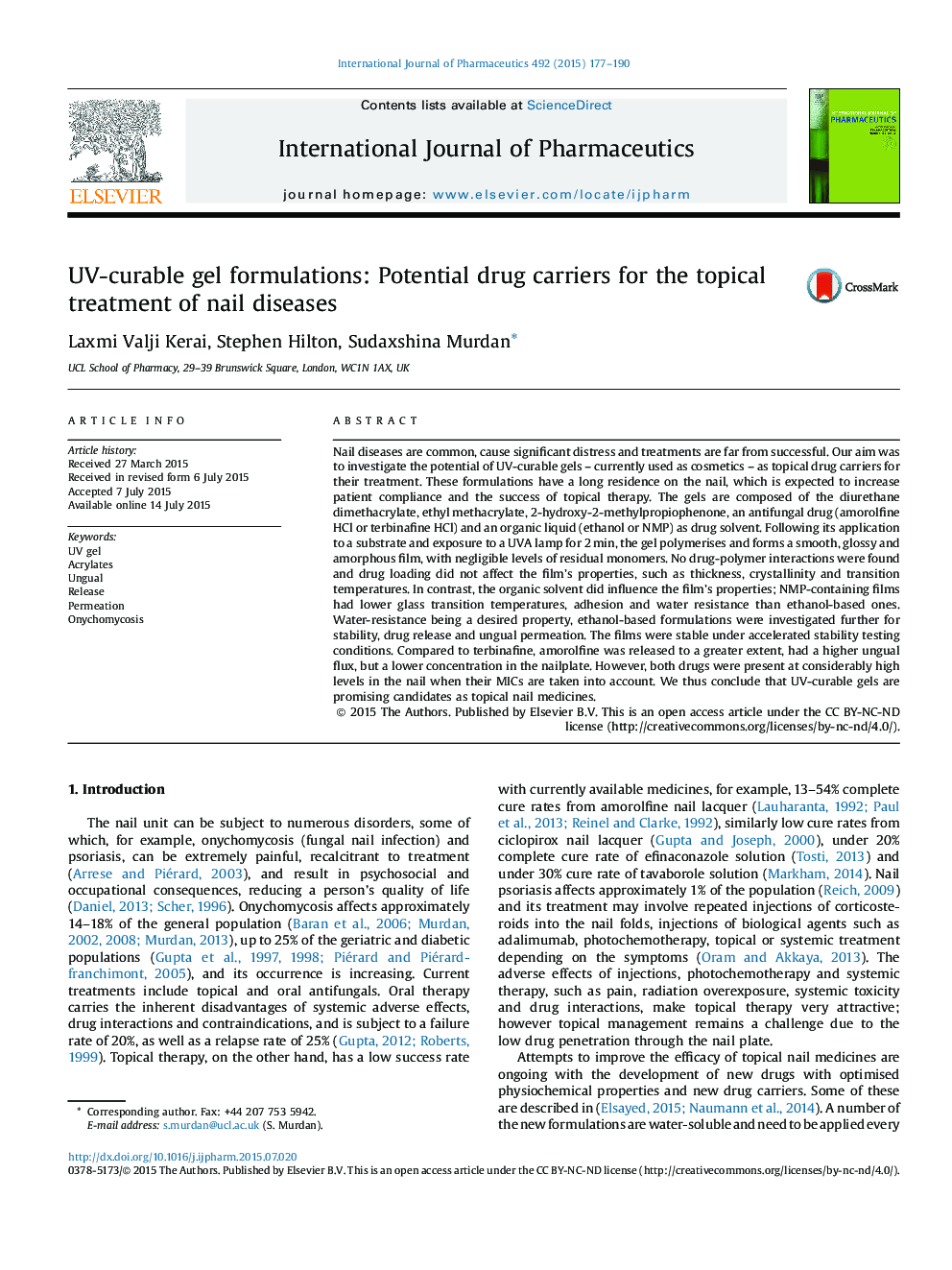| Article ID | Journal | Published Year | Pages | File Type |
|---|---|---|---|---|
| 5818554 | International Journal of Pharmaceutics | 2015 | 14 Pages |
Nail diseases are common, cause significant distress and treatments are far from successful. Our aim was to investigate the potential of UV-curable gels - currently used as cosmetics - as topical drug carriers for their treatment. These formulations have a long residence on the nail, which is expected to increase patient compliance and the success of topical therapy. The gels are composed of the diurethane dimethacrylate, ethyl methacrylate, 2-hydroxy-2-methylpropiophenone, an antifungal drug (amorolfine HCl or terbinafine HCl) and an organic liquid (ethanol or NMP) as drug solvent. Following its application to a substrate and exposure to a UVA lamp for 2Â min, the gel polymerises and forms a smooth, glossy and amorphous film, with negligible levels of residual monomers. No drug-polymer interactions were found and drug loading did not affect the film's properties, such as thickness, crystallinity and transition temperatures. In contrast, the organic solvent did influence the film's properties; NMP-containing films had lower glass transition temperatures, adhesion and water resistance than ethanol-based ones. Water-resistance being a desired property, ethanol-based formulations were investigated further for stability, drug release and ungual permeation. The films were stable under accelerated stability testing conditions. Compared to terbinafine, amorolfine was released to a greater extent, had a higher ungual flux, but a lower concentration in the nailplate. However, both drugs were present at considerably high levels in the nail when their MICs are taken into account. We thus conclude that UV-curable gels are promising candidates as topical nail medicines.
Graphical abstractDownload high-res image (174KB)Download full-size image
